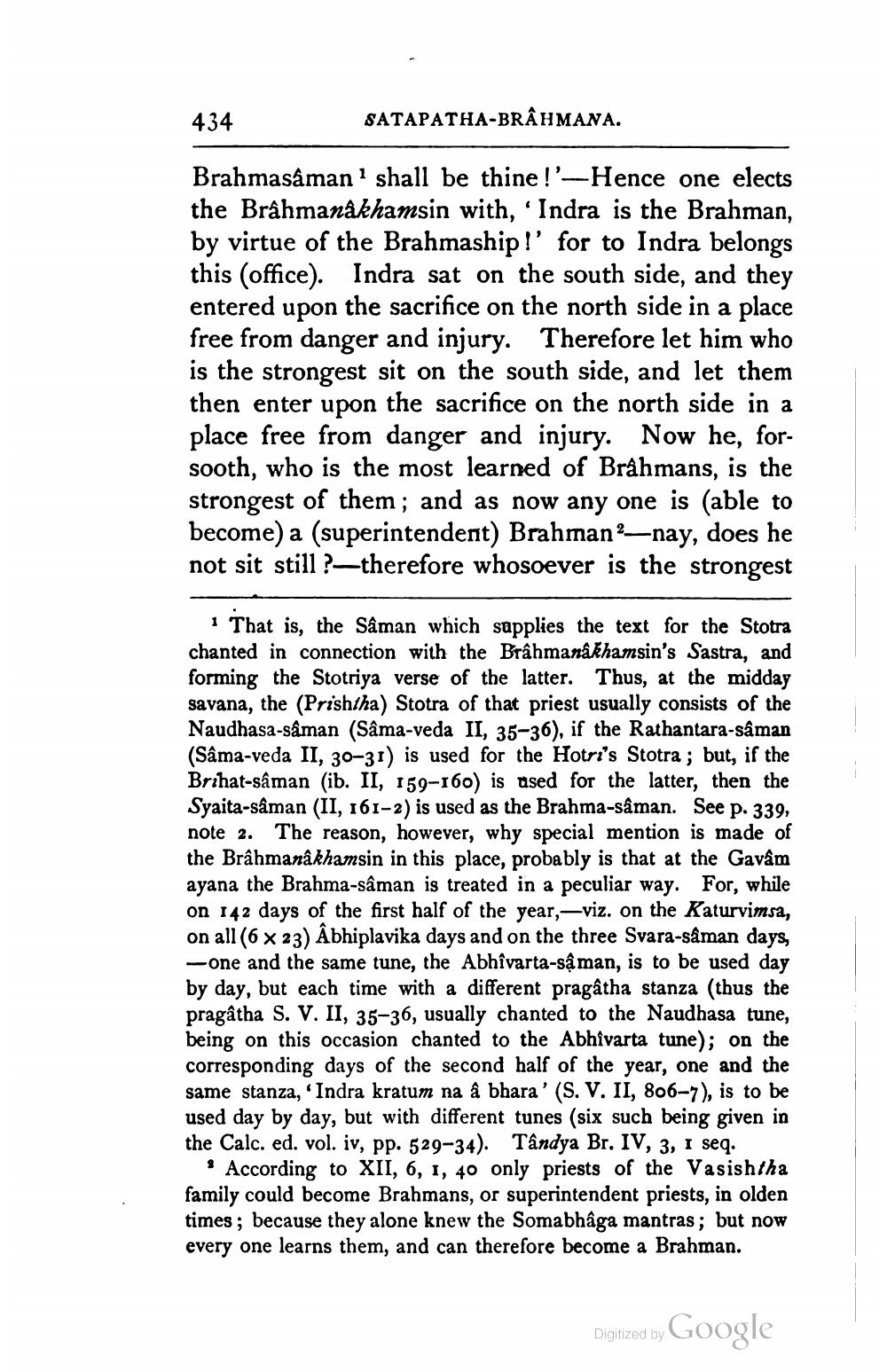________________
434
SATAPATHA-BRAHMANA.
Brahmasaman? shall be thine !'-Hence one elects the Brâhmanâkhamsin with, ‘Indra is the Brahman, by virtue of the Brahmaship!' for to Indra belongs this (office). Indra sat on the south side, and they entered upon the sacrifice on the north side in a place free from danger and injury. Therefore let him who is the strongest sit on the south side, and let them then enter upon the sacrifice on the north side in a place free from danger and injury. Now he, forsooth, who is the most learned of Brâhmans, is the strongest of them; and as now any one is (able to become) a (superintendent) Brahman?-nay, does he not sit still ?—therefore whosoever is the strongest
That is, the Sâman which supplies the text for the Stotra chanted in connection with the Brâhmanakhamsin's Sastra, and forming the Stotriya verse of the latter. Thus, at the midday savana, the (Prishtha Stotra of that priest usually consists of the Naudhasa-saman (Sâma-veda II, 35-36), if the Rathantara-saman (Sâma-veda II, 30-31) is used for the Hotri's Stotra; but, if the Brihat-sâman (ib. II, 159-160) is used for the latter, then the Syaita-sâman (II, 161-2) is used as the Brahma-saman. See p. 339, note 2. The reason, however, why special mention is made of the Brahmanâkhamsin in this place, probably is that at the Gavâm ayana the Brahma-saman is treated in a peculiar way. For, while on 142 days of the first half of the year, viz. on the Katurvimsa, on all (6 x 23) Abhiplavika days and on the three Svara-saman days,
-one and the same tune, the Abhîvarta-sậman, is to be used day by day, but each time with a different pragatha stanza (thus the pragatha S. V. II, 35-36, usually chanted to the Naudhasa tune, being on this occasion chanted to the Abhivarta tune); on the corresponding days of the second half of the year, one and the same stanza, Indra kratum na â bhara' (S. V. II, 806–7), is to be used day by day, but with different tunes (six such being given in the Calc. ed. vol. iv, pp. 529-34). Tândya Br. IV, 3, 1 seq.
According to XII, 6, 1, 40 only priests of the Vasishtha family could become Brahmans, or superintendent priests, in olden times; because they alone knew the Somabhaga mantras; but now every one learns them, and can therefore become a Brahman.
Digitized by Google




